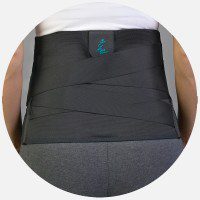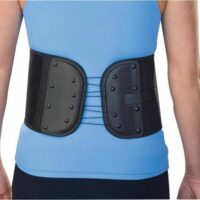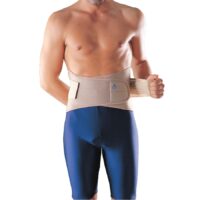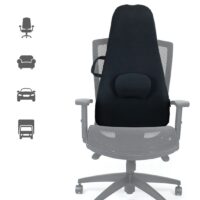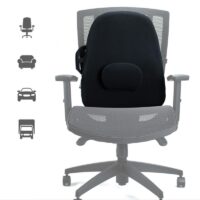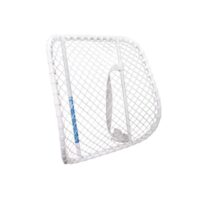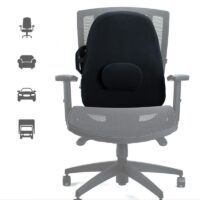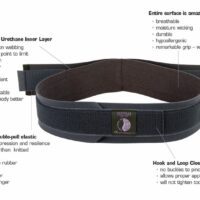Back Exercises
Article by John Miller

Back Exercises
How to Safely Strengthen Your Back
Safe Exercises and Physiotherapist Insights for Effective Pain Relief

Starting Your Journey to a Stronger, Pain-Free Back
Back pain can be a significant barrier in daily life, making even simple tasks daunting. However, a carefully planned exercise regime can be an effective solution for managing and relieving back pain. This article introduces you to safe back exercises, ideal for those who have experienced back discomfort and are eager to safely strengthen their back.
The Crucial Role of a Physiotherapist
Professional guidance is essential in this journey. A physiotherapist’s knowledge is invaluable in ensuring that your exercise plan is not only effective but also customised to your unique needs and physical limitations. They monitor your progress, adjusting back exercises to ensure they are safe and beneficial.
Initial Phase: Gentle Beginnings
Embarking on any back exercise program should be a gradual process. It’s important to start with gentle, low-impact exercises that build foundational strength and flexibility. This initial phase typically includes stretches and simple movements to boost blood flow to back muscles, easing stiffness and pain.
Incorporating ultrasound-guided exercises can provide precise targeting of specific back muscles, enhancing the effectiveness of your routine.
Safe Progression: Building Core Strength and Flexibility
As your back gains strength and flexibility, your physiotherapist will introduce more demanding exercises. This step is crucial for developing a resilient back. Exercises in this phase often focus on core strengthening, improving posture, and enhancing overall back stability, involving controlled lifting, stability exercises, and targeting specific back muscles. Pilates style back exercises may also be introduced.
Advanced Stage: Functional Back Exercises
Moving forward, you’ll progress to advanced, functional exercises. These simulate everyday activities or specific sports movements, ensuring your back can handle real-life stresses effectively. This stage not only helps in alleviating pain but is pivotal in preventing future injuries.
Consistency and Patience: Keys to Success
Healing and strengthening your back is a gradual journey. Patience and consistent adherence to your physiotherapist’s routine are vital. Open communication about any discomfort or challenges is important for effective adjustments.
Conclusion: Embracing a Stronger, Healthier Back
Adopting a structured back exercise program under a physiotherapist’s guidance can dramatically improve your life by reducing back pain and improving back functionality. With commitment and the right approach, a stronger, healthier back is within reach.
What to Do? Seeking Professional Advice
If you’re experiencing back pain or looking to strengthen your back, consulting a physiotherapist is the first step. They can design a personalised exercise program, considering your unique situation. For more information and to find a qualified professional, visit our Physiotherapists page.
For additional insights and up-to-date research on back exercises and core strengthening, it’s recommended to explore articles and resources on this website. This can provide further understanding of the benefits and techniques of ultrasound-guided back exercises and other targeted back strengthening strategies.
Related Articles
- Core Stability Training For Effective Low Back Pain Relief: Readers will learn about the benefits of core stability training in reducing low back pain and improving quality of life.
- Pilates for Back Pain: This article discusses how Pilates can aid in managing back pain by strengthening core muscles and enhancing spinal health.
- Lower Back Pain – Understanding & Managing – Physio Tips: Offers insights into how deep core muscles support the lower back and pelvis, highlighting the connection between back pain and core muscle functionality.
- Core Exercises For Lower Back Pain Relief: Focuses on the role of core exercises in helping alleviate lower back pain by supporting and maneuvering the lower back and pelvis.
- Back Pain Prevention: Essential Tips From A Physiotherapist: Explores exercises for strengthening and relaxing back muscles, focusing on flexibility, strengthening, and postural control.
- Effective Back Pain Exercise Routines For Pain Relief Guide: Provides a comprehensive guide to exercises that can relieve back pain, including posture improvement and spinal alignment routines.
- Back Exercises And Core Strength: Physio Insights: Offers insights into developing a resilient back through core strengthening, improving posture, and enhancing overall back stability.
- Gym Back Exercises: Strengthening & Pain Prevention: Discusses gym exercises that target the back, including deadlifts and rows, with tips for proper form to prevent pain.
- Back Pain: Causes, Treatments, Remedies And Preventions: Provides an overview of common causes of back pain and various treatment options, including physiotherapy recommendations.
- Sudden Back Pain Explained: Causes & Physiotherapy Solutions: Examines the most prevalent causes of sudden back pain and offers guidance on seeking physiotherapy solutions.
What Causes Lower Back Pain?
Introduction
Lower back pain is a widespread issue in Australia, stemming from diverse conditions. As physiotherapists, we often encounter various causes of this pain. This guide aims to shed light on these causes and provide valuable insights for effective management.
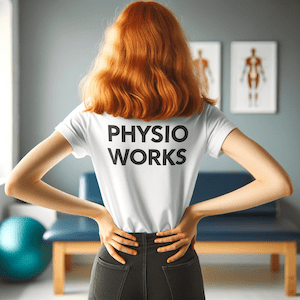

Muscle-Related Injuries
Muscle injuries are a predominant cause of lower back pain, including:
- Back Cramps and Muscle Pain: Typically resulting from overuse or strain.
- Core Stability Deficiency: Weak core muscles can lead to increased back strain.
- DOMS (Delayed Onset Muscle Soreness): Soreness affecting back muscles post-exercise.
Recent research underscores the importance of regular exercise and core strengthening in preventing these injuries.
Bone-Related Injuries
Bone health is crucial in lower back pain, encompassing conditions like:
- Spondylosis: Degenerative spine conditions.
- Spondylolysis or Stress Fracture: Common in athletes, such as cricket bowlers.
- Spondylolisthesis: Occurs when a vertebra slips over another.
- Osteoporosis: Causes bones to weaken, increasing fracture risk. Advancements in bone density scanning have improved early detection and management.
- Scheuermann’s Disease: Affects spinal bone growth in teenagers.
- Scoliosis: An abnormal curvature of the spine causing pain.
- Spinal Stenosis: A narrowing of the spinal canal leading to nerve compression.
Disc-Related Injuries
Spinal discs are vital for spinal health:
- Bulging and Disc Protrusions: These discs protrude or "slip" and can press on nerves.
- Herniated Disc: A more severe form of disc protrusion.
- Degenerative Disc Disease: Age-related disc wear and tear.
Minimally invasive surgical techniques have transformed the treatment of severe disc-related injuries where physiotherapy and other non-operative options fail to improve.
Back Joint Injuries
- Facet Joint Pain: Arises from arthritis or stress on these spinal joints.
Nerve-Related Injuries
Nerve issues can lead to:
- Nerve Pain and Pinched Nerves: Caused by spinal nerve compression from disc bulging or arthritic changes.
- Sciatica: Irritation of the sciatic nerve.
Physiotherapy and newer medications have been effective in managing these conditions. Some will require injection therapies or surgery.
Pelvis-Related Injuries
Pelvic issues also contribute to lower back pain:
- Sacroiliac Joint Pain: Involving joints connecting the spine to the pelvis.
- Piriformis Syndrome: Where the piriformis muscle irritates the sciatic nerve.
Pregnancy-Related Pain
- Pregnancy Back Pain: Often due to increased back strain during pregnancy. Prenatal physiotherapy programs are beneficial.
Systemic Diseases
Systemic diseases like Ankylosing Spondylitis, Fibromyalgia and Rheumatoid Arthritis can cause back pain.
Recent Research and Advancements
Current research emphasises a holistic approach to treating lower back pain. Techniques like yoga and Pilates, alongside traditional physiotherapy, and conservatively progressed gym programs show significant relief. The role of diet in managing weight and inflammation is increasingly recognised.
Best Treatments for Lower Back Pain
Treatment varies but often includes:
- Physiotherapy
- Pain management
- Strength and flexibility exercise programs
- Ergonomic adjustments
- Surgical interventions for severe cases
Conclusion
Lower back pain is a significant health concern in Australia. Understanding its causes and seeking professional physiotherapy advice can greatly improve life quality. Remember, early intervention is key for an effective recovery.
What to Do?
If you're experiencing lower back pain, it's vital to consult a physiotherapist or doctor. They can provide an assessment and customised treatment plan based on your specific condition.
Back Pain FAQs & Products
Your Comprehensive Guide to FAQs, Causes, and Relief
Experiencing back pain and looking for answers? Our comprehensive FAQ section covers everything you need to know about back pain - from common causes and symptoms to effective treatments.
Click the links to our detailed articles to understand better and manage your back pain. Explore links to related topics like 'Severe Back Pain Management', 'Posture Improvement Techniques', and 'Physiotherapy for Chronic Back Issues' for a holistic approach to your spinal health."
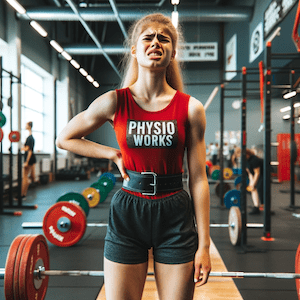

What Causes Back Pain?
Discover the various factors behind back pain, including muscle strains, herniated discs, and more.
- Most Common Causes of Back Pain
- Causes of Lower Back Pain
- Causes of Upper Back Pain
- Understanding Herniated Discs
- Osteoarthritis and Back Pain
- Back Stress Fractures
- Pregnancy Back Pain
How Can I Relieve Back Pain?
Explore treatments ranging from physiotherapy to exercises, tailored to alleviate back pain.
- Best Treatment for Lower Back Pain
- Physiotherapy for Back Pain
- Exercises for Back Strength
- Could Ultrasound Physiotherapy Help You Beat Back Pain?
- Benefits of Back Massage
Can Back Pain Be Prevented?
Learn how to prevent back pain through healthy habits and proper body mechanics.
- Preventing Back Pain Tips
- Proper Back Posture Guidelines
- Regular Exercise Routines for Back Pain
- Gym Back Exercises
When Should You See a Physio or Doctor for Back Pain?
Understand when it's crucial to seek professional medical advice for back pain.
- Severe Back Pain? Causes, Symptoms & Treatment
- Warning Signs of Severe Back Conditions
- Physiotherapy Consultation for Back Pain: What to Expect?
Repeated Bouts & Incidental Back Pain FAQs
Addressing frequently occurring and sudden back pain incidents.
- Causes of Recurrent Back Strains
- Understanding Sudden Back Pain
- What Causes Back Pain for No Reason?
- What Causes Repeat Low Back Strains & Sprains?
Youth Back Pain FAQs
Focusing on the prevention and management of back pain in teenagers.
Back Pain Exercises FAQs
Discover effective exercises and tools for back pain relief.
- Core Strengthening Exercises
- Exercise Balls for Lower Back Pain and Core Stability
- Is Walking Good for Back Pain?
- Pilates for Back Pain
Back Pain Prevention FAQs
Key insights into everyday activities and their impact on back health.
- Walking and Back Pain
- Handling Recurring Back Pain
- Healthy Weight Maintenance for Back Pain
Posture FAQs
Learn about the importance of good posture and techniques to improve it.
- Importance of Good Posture
- Correct Sitting Posture
- Improving Standing Posture
- Healthy Sleeping Postures
Other Treatments For Back Pain?
Investigate a variety of treatments, from nerve blocks to spinal cord stimulation.
- Epidural Steroid Injections
- Nerve Blocks for Pain Relief
- Spinal Cord Stimulation
- Surgical Options: When to Consider Surgery?
Conclusion
Empowering you with knowledge to understand, address, and prevent back pain effectively.
What to Do Next
Now that you've gained insight into the causes and remedies of back pain, it's time to take the next steps. Start by applying the prevention techniques and exercises detailed in this guide to your daily routine. If you're currently experiencing back pain, consider the treatment options discussed and consult a healthcare professional for personalised advice. Remember, every journey to back health is unique.
Stay informed, be proactive in your self-care, and don't hesitate to seek professional help when needed. For further reading, explore the hyperlinked articles to deepen your understanding and support your path to a pain-free life. Here’s to taking control of your back health and embracing a more comfortable, active lifestyle.






